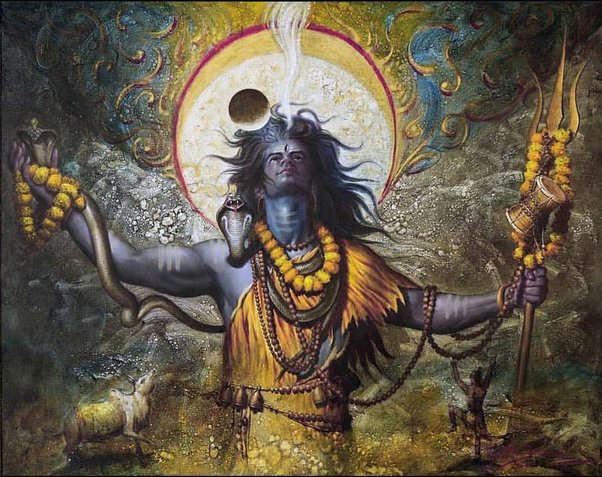What Is Vairagya? Vairagya, often translated as “dispassion” or “detachment,” is a fundamental concept in many spiritual and philosophical traditions, particularly within Hinduism, Buddhism, and Jainism.
It is a state of mind characterized by a lack of attachment and desire for worldly pleasures and possessions. Vairagya is considered an essential quality for those on the spiritual path, as it helps individuals transcend the material aspects of life and attain higher states of consciousness.
In this write-up, we will explore more on the Vairagya Meaning, its significance, the levels, and stages to achieve Vairagya, how it contributes to one’s spiritual journey, and lastly how to practice dispassion in daily life.
Vairagya Meaning Explained

The Meaning of Vairagya as per the Sanskrit term can be understood as a state of inner detachment or dispassion.
Vairagya involves distancing oneself from the transient and impermanent aspects of life and focusing on the eternal and unchanging aspects of existence. It is a state of inner detachment from the transient and material aspects of life, as well as a lack of attachment to desires, possessions, and ego-driven emotions.
The core idea of Dispassion is to let go of worldly attachments and to move beyond the constant pursuit of material or sensory pleasures. This detachment allows individuals to focus on deeper spiritual pursuits and self-realization.
Vairagya can be seen as a means to reduce suffering, gain mental clarity, and ultimately attain spiritual growth and liberation from the cycle of birth and death. It is a path to inner peace and the recognition of one’s true nature and connection to the divine or the universal consciousness
The Two Levels of Vairagya – Apara Vairagya & Para Vairagya
The two levels of Vairagya, namely Apara Vairagya and Para Vairagya, represent progressive stages in the practice of detachment or dispassion within the context of Hindu philosophy, particularly in the paths of Yoga and Vedanta.
These two levels acknowledge the diverse needs and capacities of individuals on their spiritual journey.
What Is Apara Vairagya? (Preliminary or External Renunciation)
Apara Vairagya is the initial stage of detachment or dispassion. This stage involves a preliminary form of dispassion and renunciation, primarily focused on reducing external attachments and desires.
The term “Apara” means “lesser” or “lower,” signifying that this level of Vairagya deals with the more superficial aspects of detachment
In Apara Vairagya, individuals consciously begin to detach from material possessions, worldly pleasures, and sensory indulgences. They may simplify their lifestyles, minimize their attachment to physical possessions, and make an effort to control their desires.
The goal of Apara Vairagya is to reduce external distractions and attachments, making it easier for individuals to turn their attention inward and focus on spiritual pursuits.
This stage of Dispassion is often considered a necessary step on the path to deeper levels of detachment and self-realization. It helps individuals create the initial conditions for spiritual growth by freeing themselves from the entanglements of the material world.
Ultimately, Apara Vairagya is a preparatory stage that paves the way for more profound levels of dispassion and self-transcendence, such as Para Vairagya and beyond.
What Is Para Vairagya? (Higher or Internal Renunciation)
Para Vairagya is an advanced and profound stage of detachment. While Apara Vairagya represents the preliminary form of dispassion, primarily focused on external renunciation, Para Vairagya goes beyond external attachments to delve into inner detachment and a deeper understanding of the self and the world.
Para Vairagya represents a more advanced and mature form of dispassion that goes beyond merely reducing external attachments. It involves the detachment from the ego, the identification with the physical body, and even the sense of “I” or individual identity.
Para Vairagya is the path to transcendence and union with the divine. It involves a fundamental transformation in the way individuals perceive themselves and the world. This is a critical part of the spiritual journey, leading to a deeper spiritual understanding and a profound sense of inner peace.
The Four Stages Of Vairagya
There are 4 stages of Vairagya reflecting a systematic progression in the practice of detachment within the Sankhya philosophical framework particularly as presented in the Sankhya Karika, an ancient Sanskrit text attributed to the sage Kapila.
Vacaspati Misra, who was associated with the Advaita Vedanta tradition elaborated on these four stages of Vairagya often described as fourfold, emphasizing a progressive and deepening process of detachment. These stages are:
Yatamana (Striving) – refers to the stage of conscious effort or restraint of senses -This involves the practice of the mind away from sensory distractions and external stimuli.
Vytireka (Detachment) – the stage of detachment or separation, here the practitioner not only restrains the senses but also develops a sense of detachment from the external world.
Ekendriya (One-Pointedness) -signifies the stage of single-pointed concentration. The practitioner achieves a higher level of mastery over the senses.
Vasikara (One Organ of Sense) – represents the stage of complete mastery or control. In this stage, the senses are no longer a source of distraction, and the mind is fully under control. The individuals are no longer influenced by the dualities of pain and pleasure.
The Importance of Vairagya In Spiritual Progress

Here are several key reasons why detachment is essential for spiritual progress,
Reduction of Suffering: Attachment to desires, possessions, and the ego often leads to suffering.
Dispassion allows individuals to let go of these attachments, thereby reducing their emotional stress, anxiety, and psychological suffering associated with success or failure. This helps in maintaining emotional equilibrium.
By detaching from the transient and material aspects of life, individuals can find lasting peace and contentment.
Clarity of Mind: Attachment and desires cloud the mind, making it challenging to achieve mental clarity and focus. This helps individuals to make decisions with greater clarity and objectivity.
Vairagya helps in clearing the mind, allowing individuals to engage in introspection, self-inquiry, and deep meditation leading into one’s true nature and the nature of reality.
Enhanced Relationships: Detachment doesn’t imply steering clear of relationships, instead, it involves approaching them with a balanced and equanimous mindset. This approach has the potential to foster healthier and more well-balanced relationships.
Acceptance of Change: Detachment imparts the wisdom of acknowledging life’s transience and the certainty of change, directing attention toward the eternal.
Embracing this reality enables individuals to navigate the fluctuations of life with increased resilience and adaptability.
Spiritual Growth: Vairagya, profoundly influences spiritual growth by redirecting focus from external, transient pursuits to an internal exploration of the self and its connection to the eternal.
Through dispassion, individuals gradually detach from the ego, embrace mindfulness, and develop resilience in the face of life’s challenges.
Ultimately, this spiritual discipline paves the way for self-realization, where one transcends the illusion of separateness and recognizes their intrinsic connection to the universal truth, fostering a profound and enduring sense of spiritual fulfillment.
Transcendence of Ego: The ego is often at the root of suffering and conflicts. Vairagya leads to a decrease in ego identification, enabling individuals to become more selfless and compassionate fostering a sense of interconnectedness with others and the world.
Freedom from Fear: Attachment is often accompanied by fear, fear of losing what one possesses, or fear of not achieving what one desires.
Detachment leads to a state of fearlessness, as individuals are no longer attached to specific outcomes or the judgments of others. This fearlessness allows them to face life’s challenges with equanimity.
Inner Peace & Contentment: As individuals advance in their journey of embracing Vairagya, they frequently encounter a deep-seated inner tranquillity, satisfaction, and delight.
This internal serenity remains unaffected by external situations establishing effective detachment and bestowing enduring happiness.
Freedom from Cycle of Birth and Death: Vairagya is a key tool for achieving liberation (Moksha).
By detaching from worldly entanglements, individuals will be able to focus their minds on spiritual teachings and practices, assimilate knowledge, and become free from the cycle of reincarnation (birth and death).
Abhyasa Vairagya – How To Practice Vairagya In Daily Life?
While the practice of detachment has deep roots in spiritual and philosophical traditions, individuals from various backgrounds can incorporate its principles into their daily lives to experience greater peace, fulfillment, and a sense of purpose. Here are a few practices.





Self-awareness: Become aware of your attachments and desires by reflecting on the things that you cling to and questioning their real significance.
Engage in self-inquiry to understand the nature of the self and the ego, which are at the root of attachments.
Practice mindfulness: Observe your thoughts and emotions without attachment by practicing daily mindfulness meditation, this, allows you to develop a sense of inner detachment.
Vairagya Chants: Vairagya Shatakam and Nirvana Shatkam are the chants being an integral part of devotional practices and can be used as a form of meditation, reflection, or a source of inspiration to deepen spiritual understanding and cultivate detachment from the material world.
Simplify your life: Reducing material possessions and living a simpler life can aid in Abhyasa Vairagya.
Seek guidance: Consider seeking guidance from spiritual teachers or gurus who can provide insight into the practice of detachment.
Conclusion
Vairagya stands as a profound principle crucial for spiritual advancement and self-discovery.
Through fostering detachment from fleeting and material dimensions of existence, individuals can discover enduring serenity, mental clarity, and a profound connection with their authentic selves.
While the path to embracing detachment may pose challenges, its dividends are beyond measure, ultimately guiding one toward a life marked by spiritual fulfillment and profound wisdom.
- The Namagiri Thayar Mantra – For Wisdom, Creativity & Prosperity - April 29, 2024
- Krishnashtakam – “Krishnam Vande Jagadgurum” – Lyrics & Meaning - April 4, 2024
- Karadarshanam – “Karagre Vasate Lakshmi” – Meaning & Benefits - March 26, 2024


0 Comments